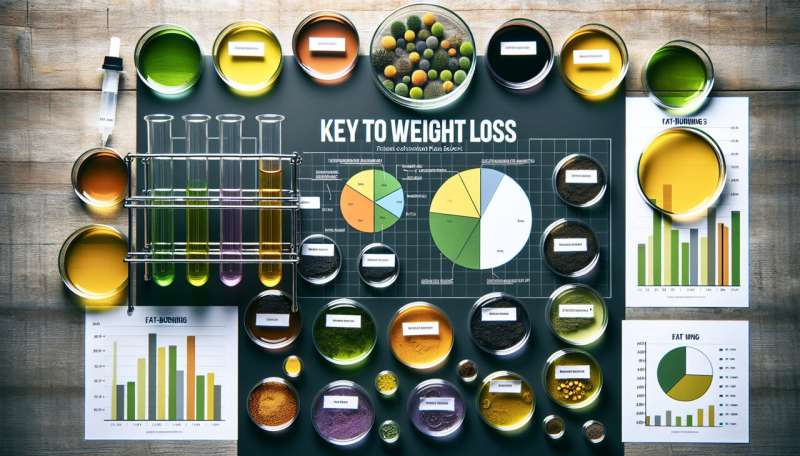
Two plant compounds with potential as GLP-1 agonist weight loss pills have been identified in an AI (artificial intelligence)-based study, the European Congress on Obesity (ECO 2024) (Venice 12-15 May) will hear.
Glucagon-like peptide-1 (GLP-1) receptor agonists such as semaglutide and tirzepatide are highly effective at helping people lose weight. By mimicking the action of a hormone called GLP-1 and binding to and activating the GLP-1 receptor in cells, they reduce appetite and feelings of hunger, slow the release of food from the stomach, and increase feelings of fullness after eating.
There is, however, a need for alternatives, says Elena Murcia of the Structural Bioinformatics and High-Performance Computing Research Group (BIO-HPC) & Eating Disorders Research Unit, Catholic University of Murcia (UCAM), Murcia, Spain.
She explains, “Although the effectiveness of current GLP-1 agonists has been demonstrated, there are some side-effects associated with their use—gastrointestinal issues such as nausea, vomiting, and mental health changes like anxiety and irritability. Recent data has also confirmed that when patients stop treatment, they regain lost weight.
“In addition, most GLP-1 agonists are peptides—short chains of amino acids that stomach enzymes can degrade—and so they are currently more likely to be injected rather than taken orally.”
“Drugs that aren’t peptides may have fewer side effects and be easier to administer, meaning they could be given as pills rather than injections. Other recent research has highlighted two promising non-peptide compounds, TTOAD2 and orforglipron.”
“These are synthetic and we were interested in finding natural alternatives.”
Murcia and colleagues used high-performance artificial intelligence (AI) techniques to identify non-peptide natural compounds that activate the GLP-1 receptor.
“We focused on plant extracts and other natural compounds because they may have fewer side-effects,” says Murcia.
Virtual screening was used to sift through more than 10,000 compounds to identify those that bound to the GLP-1 receptor.
Next, further AI-based methods were used to look at how closely these bonds resembled those that occur between the GLP-1 hormone and its receptor. The 100 compounds that bound most similarly were then chosen for additional visual analysis to determine whether they interacted with key residues—amino acids—on the receptor.
Finally, a Venn diagram (a mathematical graph using overlapping circles) was compiled to identify the compounds with the highest potential as GLP1-R agonists.
This resulted in a shortlist of 65 compounds, two of which, “Compound A” and “Compound B,” bound strongly to the key residues in a similar way to TTOAD2 and orforglipron.
Compound A and Compound B are derived from very common plants, extracts of which have been associated with beneficial effects on human metabolism in the past. Further details of the plants and the compounds are being kept confidential until patents are granted. It is hoped both could be given in pill form. The two compounds are now undergoing lab tests.
Murcia says, “We are in the early stages of developing new GLP-1 agonists derived from natural sources. If our AI-based calculations are confirmed in vitro and then in clinical trials, we will have other therapeutic options to manage obesity.”
“Computer-based studies such as ours have key advantages, such as reductions in costs and time, rapid analysis of large data sets, flexibility in experimental design, and the ability to identify and mitigate any ethical and safety risks before conducting experiments in the laboratory.”
“These simulations also allow us to take advantage of AI resources to analyze complex problems and so provide a valuable initial perspective in the search for new drugs.”
Provided by
European Association for the Study of Obesity
Citation:
AI-based analysis identifies two plant extracts with potential as GLP-1 agonist weight loss pills (2024, March 26)
retrieved 26 March 2024
from https://medicalxpress.com/news/2024-03-ai-based-analysis-potential-glp.html
This document is subject to copyright. Apart from any fair dealing for the purpose of private study or research, no
part may be reproduced without the written permission. The content is provided for information purposes only.


